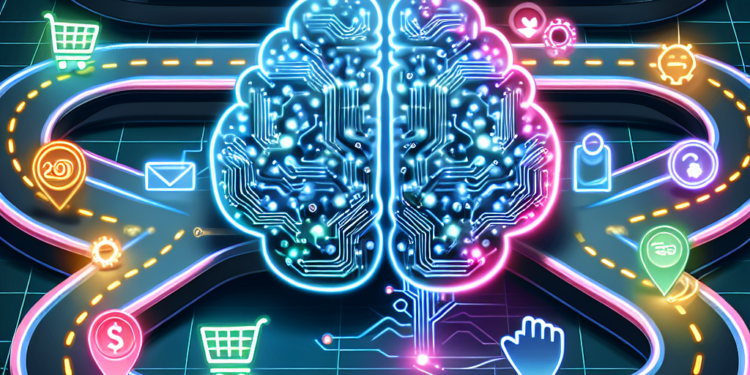Artificial Intelligence (AI) has become an increasingly important tool for businesses looking to optimize their customer journeys. By leveraging AI technologies, companies can gain valuable insights into customer behavior and preferences, allowing them to tailor their offerings and communications to better meet the needs of their target audience. In this article, we will explore some key tips for optimizing customer journeys using AI.
1. Utilize Predictive Analytics
One of the most powerful applications of AI in optimizing customer journeys is predictive analytics. By analyzing data from past interactions, AI algorithms can predict future customer behavior and preferences, allowing businesses to anticipate their needs and tailor their offerings accordingly. For example, by analyzing patterns in customer purchase history, AI systems can predict which products or services a customer is likely to be interested in, and present them with personalized recommendations.
2. Personalize Customer Interactions
Personalization is key to creating a positive customer experience, and AI can help businesses achieve this on a large scale. By analyzing customer data, AI algorithms can create detailed customer profiles, including information such as demographics, preferences, and purchase history. This information can then be used to personalize communications with customers, such as targeted marketing campaigns or personalized product recommendations. By personalizing interactions with customers, businesses can increase customer satisfaction and loyalty, leading to higher retention rates and increased sales.
3. Improve Customer Engagement
AI can also help businesses improve customer engagement by providing customers with personalized and timely interactions. For example, AI-powered chatbots can provide customers with real-time assistance, answer questions, and resolve issues quickly and efficiently. By automating customer service tasks, businesses can free up their human employees to focus on more complex or strategic activities, while still providing customers with the level of service they expect.
4. Optimize Customer Segmentation
Segmenting customers based on common characteristics or behaviors is a key strategy for businesses looking to target their marketing efforts more effectively. AI can help businesses optimize their customer segmentation by analyzing large amounts of data to identify common patterns and trends. By segmenting customers more effectively, businesses can create targeted marketing campaigns that are more likely to resonate with their target audience, leading to higher response rates and increased sales.
5. Streamline the Customer Journey
AI can also help businesses streamline the customer journey, making it easier for customers to navigate through the sales process and make a purchase. By analyzing customer interactions with websites or mobile apps, AI algorithms can identify pain points or bottlenecks in the customer journey, and suggest ways to improve the process. For example, AI can recommend changes to the layout of a website, or suggest ways to streamline the checkout process, making it easier for customers to complete a purchase quickly and efficiently.
6. Leverage Customer Feedback
Customer feedback is a valuable source of information for businesses looking to improve their products or services, and AI can help automate the process of collecting and analyzing feedback. By analyzing customer reviews, surveys, or social media posts, AI algorithms can identify common themes or issues raised by customers, and suggest ways to address them. By leveraging customer feedback in this way, businesses can gain valuable insights into customer preferences and pain points, and use this information to improve their offerings and enhance the customer experience.
7. Monitor Customer Sentiment
Monitoring customer sentiment is crucial for businesses looking to gauge customer satisfaction and loyalty. AI can help businesses track customer sentiment by analyzing customer interactions with their products or services, such as reviews, social media posts, or customer service interactions. By analyzing this data, businesses can gain valuable insights into customer attitudes and perceptions, and identify areas where improvements are needed. By monitoring customer sentiment in real-time, businesses can respond quickly to any negative feedback or issues, and take proactive steps to address customer concerns.
8. Integrate AI with Other Technologies
Finally, businesses looking to optimize their customer journeys using AI should consider integrating AI with other technologies, such as CRM systems, marketing automation platforms, or analytics tools. By integrating AI with other technologies, businesses can create a seamless and integrated customer experience, allowing them to leverage the full capabilities of AI to improve customer interactions and drive sales. For example, by integrating AI with a CRM system, businesses can create detailed customer profiles that provide a 360-degree view of the customer, allowing them to deliver personalized and targeted communications at every stage of the customer journey.
In conclusion, AI has the potential to revolutionize the way businesses interact with their customers, by providing valuable insights into customer behavior and preferences, and enabling businesses to tailor their offerings and communications to better meet the needs of their target audience. By following the tips outlined in this article, businesses can optimize their customer journeys using AI, and create a seamless and personalized experience that leads to increased customer satisfaction and loyalty.













